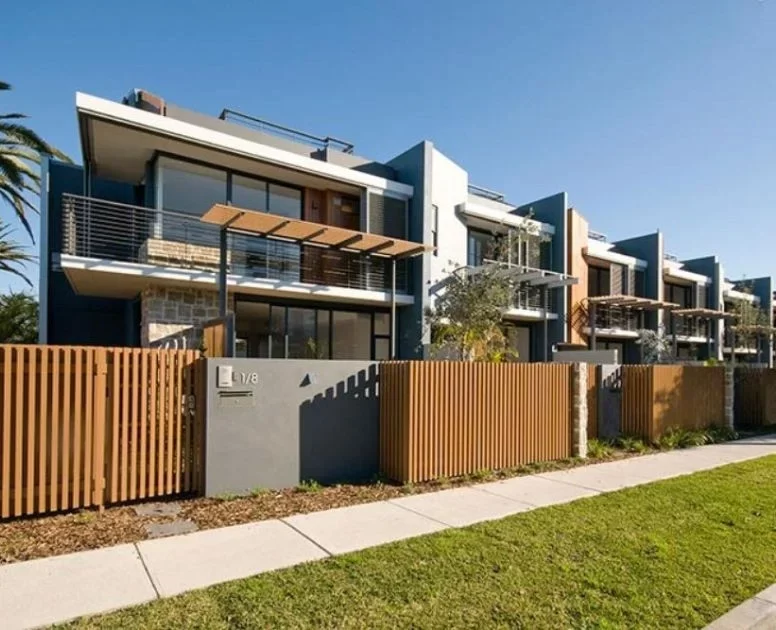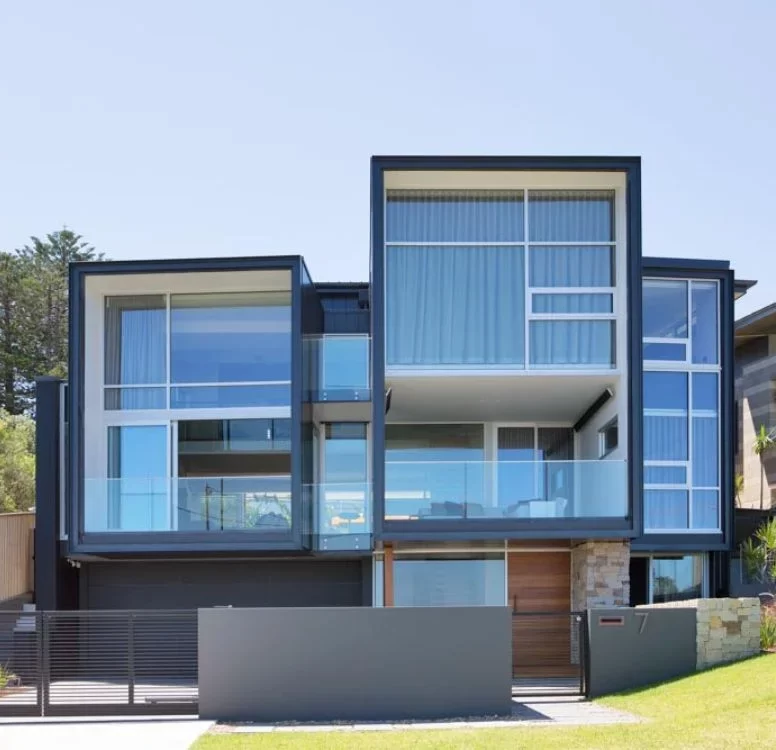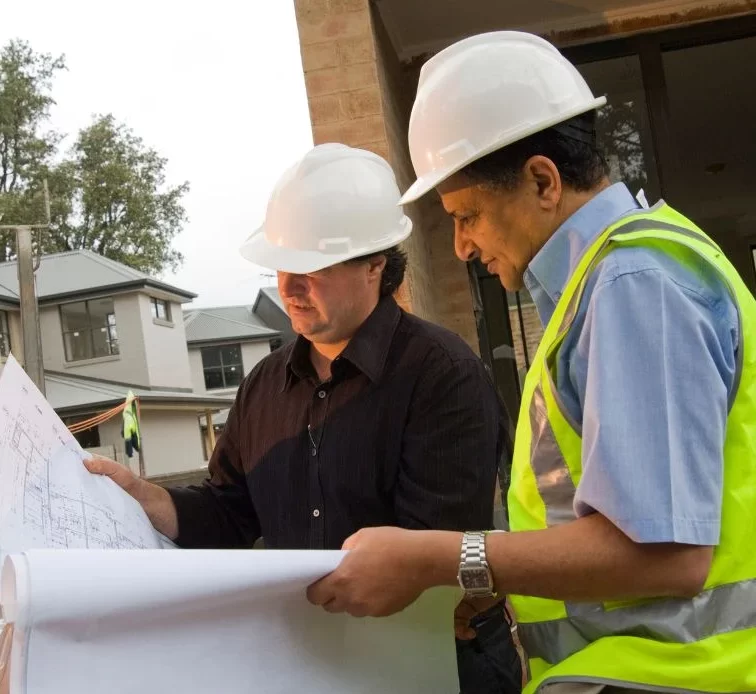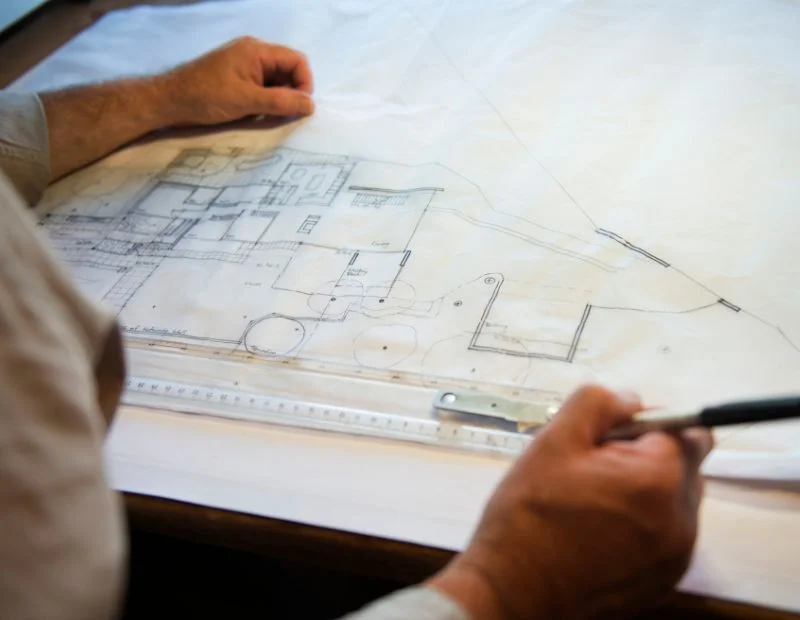Freshwater
Concept: Creating a light, airy, character-filled three-level Hampton-style beach home on a small corner site

Subdividing land is an exciting process that has become increasingly popular on the North Shore, for good reason.
It’s a fantastic option for those looking to maximise land value, build separate living quarters for their kids or sell off the second lot, but it’s a process that requires essential due diligence to ensure the best outcome.
So whether you’re a property developer or someone who wants to make the most of their existing land, what do you need to know when you’re planning a subdivision?

Depending on the plot of land you’re wanting to subdivide, there are various possibilities you can consider.
In a simple subdivision, you might divide one block into two, typically for residential purposes, allowing the construction of an additional property either behind or in front of the existing house. Multi-residential subdivisions typically use much larger blocks for development.
In Australia, there are five common types of subdivisions:
1. Freehold subdivision: Dividing an existing block into two or more separate titles, which is the most prevalent type of subdivision across the country.
2. Strata subdivision: Dividing a block vertically to create apartments or units, including shared areas such as driveways and gardens, commonly seen in apartment buildings.
3. Bare land strata subdivision: An undeveloped block divided vertically; essentially a vacant piece of land that has not been built upon yet.
4. Battle-axe subdivision: This is a uniquely shaped block, resembling an axe, that allows for the construction of a new home at the back of the property, accessible through a long driveway up the side.
5. Development subdivision: Where developers purchase a large cleared plot of land to create multiple titles for residential or commercial properties.
Understanding the subdivision available for your land is the first step in conducting proper due diligence. But once you have that figured out, you’ll also need to ask the question: is it even feasible?

Whether your site is suitable for subdivision depends on various factors, including the site itself and whether the land has any significant features that might limit the potential divisions, like steep sloping, irregular slopes or atypical soil conditions.
What other factors will you need to consider as part of your due diligence?
1. Are there particular regulatory or legal restrictions? If your property is subject to such restrictions, like heritage conservation areas or environmental protection regulations, even significant trees, then your options for subdividing will be quite limited. In addition, even if your subdivision is approved, if a significant tree is to remain on the land and/or if the significant tree is on a neighbouring property, there will be limitations to where the home may be located and the size of the home, which will in turn affect the feasibility of the project.
2. If you’re developing, is there market demand for your proposal? Insufficient demand might make the lots unlikely to sell or rent, making it a difficult or unviable choice.
3. Have you considered cost versus profit? If your projected costs of land acquisition, development, infrastructure upgrades and other expenses outweigh the potential profits or financial gains from the subdivision, you might need to consider a different approach or plan.
4. What existing infrastructure is on site? If essential utilities such as water, electricity, or sewage systems wouldn’t be able to support the increased demand from the subdivision and the necessary upgrades or connections would be financially unfeasible, your project might’ve hit a roadblock.
5. How does the local community feel? If they’re strongly opposed to the plan, with concerns like increased population density, traffic congestion or negative environmental impacts, it could lead to prolonged legal battles or project delays.

As with any architectural project, there are certain regulations and legislations that need to be adhered to in a subdivision project.
On the North Shore, relevant legislations include:
On top of these legislations, there are also the Local Environmental Plans (LEPs) and Development Control Plans (DCPs) to consider and adhere to as well.
But don’t let it overwhelm you. When you have the support of highly experienced architects like our team at Playoust Churcher who know these legislations back-to-front and inside-out, the whole process runs much more smoothly.
After you’ve navigated your way through the feasibility process, you’ll then need to submit a DA (Development Application) to obtain council approval before your subdivision can progress.

Throughout our work on projects like multi-residential developments, SEPP housing and estate planning, we’ve finessed the application process down to a fine art. Here’s a brief overview of the steps you’ll need to take:
It might seem like a lot to consider, and it is… but when you work with our architects, you’ll find the whole process far more streamlined and simple than you might otherwise.
We’re well-versed across the entire due diligence process, from feasibility assessments to DA submission and even construction management.
All you need to do is sit back and enjoy the ride towards your finished product, whatever that might be!
If you’ve got plans for a subdivision but aren’t sure whether it’s possible, contact us today to start the discussion.
Due diligence involves investigating zoning, environmental overlays (heritage, bushfire, flood zones), lot size requirements, access, servicing, and market conditions before proceeding with subdivision or dual occupancy. It ensures realistic project outcomes and informed financial decisions.
It helps identify constraints that can impact feasibility, timelines, and cost—such as council variations, limited access, environmental restrictions or design limitations. This avoids surprises and supports confident decision-making.
We assess zoning and overlays, site access and topography, existing structures, utilities, and heritage character. We also consider market context and design potential to ensure that subdivision or dual occupancy is viable and compliant.
We provide a comprehensive due diligence service, including zoning analysis, site feasibility planning, consultant management (e.g. traffic, arborist, heritage), concept design and DA strategy aimed at maximizing development potential.
Yes. Professional assessment can uncover sites eligible for R2 or SEPP-based dual occupancy, townhouse or seniors housing—turning underused properties into valuable architectural and financial opportunities.
Begin with a feasibility consultation. We review your site in detail to assess subdivision or development potential, explore design scenarios, and provide strategic guidance before project commitment.
Understanding your subdivision options—including freehold, strata, bare‑land strata, battle‑axe, and development subdivisions—is essential. This awareness lays the groundwork for informed decision-making and aligns your strategy with land potential.
A robust feasibility study—covering design options, regulatory requirements, cost estimations, timelines, and market uptake—provides clarity and risk awareness. This foundation helps stakeholders make strategic, low-risk decisions.
Factors such as steep or irregular topography, soil quality, and unusual site shape can significantly influence subdivision feasibility. A thorough site evaluation—both desktop and physical—is necessary to uncover hidden challenges and opportunities.
Beyond technical feasibility, subdivision projects must align with market realities. Understanding buyer demand for new lots—or the viability of rentals—can mean the difference between a lucrative investment and an unsold asset.
Managing Director & Nominated Architect
NSW Architect Registration No. 5924
With over 30 years of architectural experience, Brett Churcher leads Playoust Churcher Architects with a rare combination of design expertise and commercial insight. As a registered architect and Managing Director, Brett has played a pivotal role in delivering high-end single residential homes and boutique medium-density developments across Sydney’s North Shore and beyond.
Brett’s unique strength lies in his deep understanding of both architectural design and the Sydney property market. His valuation background enables him to align creative vision with practical feasibility, ensuring each project achieves both aesthetic excellence and financial viability.
At Playoust Churcher, Brett drives the studio’s growth, strategy, and leadership, while remaining closely connected to what matters most: the client. His ability to see the bigger picture from a client’s perspective and to guide projects seamlessly through the design process is at the heart of his role and reputation.

Reach out to Brett to explore how Playoust Churcher can bring it to life—with clarity, creativity and confidence.
Concept: Creating a light, airy, character-filled three-level Hampton-style beach home on a small corner site
Concept: Adapting a beautiful family heritage home in a quiet street on a large site to suit the family’s lifestyle
Concept: Designing a new family home that maximises the views and introduces a sense of open space
Concept: A complex yet successful renovation of this stunning heritage home in a conservation area
Concept: A 1970s build transformed into a bright, open design maximising stunning harbour views
Concept: A complete rebuild of half the property over two levels, whilst also incorporating the property next door
Concept: A majestic holiday home that pushes the design envelop, blending sustainable materials and natural light
Concept: A major ground floor renovation of a large estate with a new three-car garage and 14 metre pool
© Copyright Playoust Churcher 2025 All rights reserved. Website by Brilliant Digital.
We live and work on the lands of the Gadigal people of the Eora nation. We acknowledge their traditional custodianship of the land and pay respects to their Elders past, present and emerging.